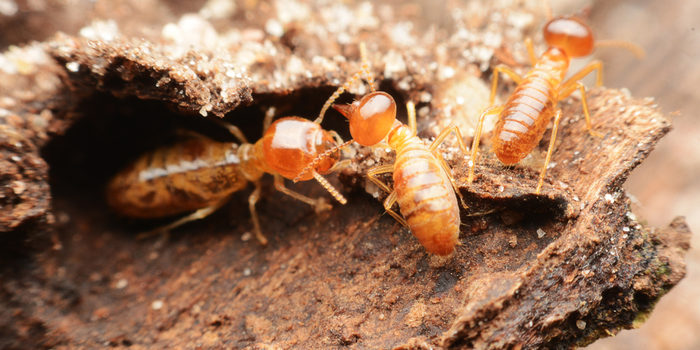


One of the most damaging and destructive forms of insects for your home is the lowly termite. Few creatures on this planet, barring maybe the mosquito, earn quite as much ire as the termite. Drywood termites, in particular, love to live in door and window frames, skirting boards, and even your wooden furniture.
It’s important that you know the signs that point to termite infestations. These wood-devouring little arthropods can go undetected for months, or even years, tearing up your home all the while. Once you know the signs to look for, however, you can root these evil little bugs out and set your home right.
Know What to Look For
People often confuse termites for white ants, though this is a mistake. Termites do look similar to ants in some ways, and even have some similar behaviors. However, there are some distinctions you should take note of when you see a light-colored “ant”. Firstly, remember that there’s no such thing as a white ant.
Termites have two pairs of wings, like ants, but their pairs of wings are the same size. Ants have one larger and one smaller pair of wings. Termite antennae are completely straight, not bent like those of an ant. The dead giveaway, as we’ve indicated, though, is that termites are white or cream-colored, and no white or light-colored variant of ant is known to exist.
Swarmers
The presence of swarmers, or flying termites, is a dead giveaway that there will soon be termites eating through the wood in your home. These flying swarmers are usually seen just after a heavy rain, at least in the drywood species of termites. Drywood are the ones you need to be worried about, so keep an eye out for these flying bugs after rain.
Flying termites, unlike ants, can be male or female. They’re typically younger members of their species that are looking to find a mate. Upon finding a mate, they seek out a proper nest (like the inside of your doorframe) and set out making a colony. A sufficient food source can sustain a king and a queen for as long as ten years.
The Tell-Tale Sound
There’s a rather distinct sound that is made by termites who are working away at eating your home. It’s a slight clicking, something low and quiet that’s difficult to hear unless you get close to the affected area. This clicking sound is the worker termites banging their heads against the wood to warn the colony of impending danger.
Another sound you will easily by able to tell termites by is the sound of them just chowing down on your furniture or home. It’s a faint sound, but it’s distinctive. It sounds like someone munching, just at a very low frequency and, you know, inside of your furniture.
Check Your Wood
A quick way to check for major termite damage is to tap on the wood surfaces of your home. If you hear a hollow or paper-like sound as a result, you know that you’re dealing with termites. Drywood termites eat wood from within, and often leave a small amount on the surface. This leads to them often being difficult to spot with the naked eye. However, tapping on affected wood should quickly reveal the truth. If your wood sounds lighter or more hollow than you think is natural, it’s time to call out an exterminator to handle your termite problem.
Another thing to check your wood for is frass, or termite droppings. Frass is an indicator of drywood termites, and is commonly checked for in termite inspections. Unlike some other forms of termites, drywood termites don’t use their droppings to form their tunnels. Instead, they push the dark, powdery excretions out of openings near their nests.










